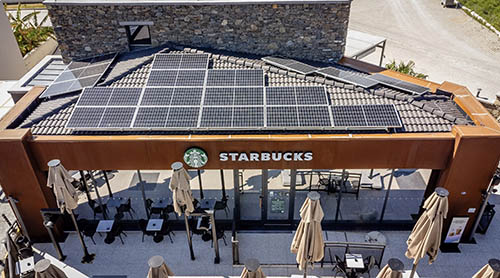Seattle — Starbucks has certified 6,091 Greener Stores, nearly doubling its portfolio in the past year, and a milestone achievement toward the company’s goal of certifying 10,000 Greener Stores globally by 2025. In markets around the world, Greener Stores’ energy and water savings and waste diversion help advance the company’s goal to reduce carbon emissions, water usage and landfill waste by 50% by 2030.
The company has Greener Stores in 44 markets with new markets including India, Hong Kong, Indonesia, Malaysia, New Zealand, Philippines, Singapore, Thailand, Taiwan, Vietnam, Bahrain, Italy, France, Spain and Costa Rica, including the Hacienda Alsacia Visitor Center café at Starbucks first and only coffee farm.
“Our big vision for the future is for every Starbucks store around the world to be more sustainable,” says Michael Kobori, Starbucks’ chief sustainability officer. “Starbucks environmental promise comes to life through our baristas’ daily actions which help define a Greener Store, our innovative shift toward reusable cups, and our partnership with coffee farmers on sustainable growing practices — it’s all part of our commitment to give more than we take from the planet.”
Since October 2022, all new Starbucks stores in Latin America and the Caribbean (LAC) are being built under the Greener Stores framework.
Being certified as a Greener Store means meeting standards across eight environmental impact areas developed in partnership with the World Wildlife Fund (WWF) and SCS Global Services: water stewardship, energy efficiency, waste diversion, renewable energy, responsible materials, engagement, sites, communities, health and wellbeing.
Each Greener Store has a combination of sustainable features that help it receive its third-party verification. Some stores have obvious elements like solar panels or water recycling tanks. While others have more subtle features behind the counter like high-efficiency appliances, low-emitting paint and sealants, and energy management systems as well as store practices like composting and food donation.
For example, in the United States, Starbucks Greener Stores practices have saved the company almost $60 million in annual operating costs, including 30% water savings and 30% energy reduction when compared to historic store practices.
SOURCE: Starbucks
